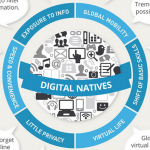8. November 2025
Meta Platforms hat 2024 einen Jahresumsatz von 164,5 Mrd. US-Dollar generiert. Über 97 Prozent davon gründen auf dem Verkauf von Werbung auf den hauseigenen Plattformen, also Facebook, Instagram, WhatApp und Threads (siehe Form 10-K).
Einer gerade publizierten Reuters-Recherche zufolge sollen rund 10 Prozent dieser Werbeeinnahmen – oder 16 Mrd. US-Dollar – laut internen Dokumenten des Unternehmens aus Schaltungen mit betrügerischer Absicht (Scam) stammen. Meta Platforms hat die eigenen Schätzungen in einer ersten Reaktion inzwischen als »rough and overly-inclusive« bezeichnet. Aus dem Reuters-Artikel:
»Meta internally projected late last year that it would earn about 10% of its overall annual revenue – or $16 billion – from running advertising for scams and banned goods, internal company documents show. […] Much of the fraud came from marketers acting suspiciously enough to be flagged by Meta’s internal warning systems. But the company only bans advertisers if its automated systems predict the marketers are at least 95% certain to be committing fraud, the documents show. If the company is less certain – but still believes the advertiser is a likely scammer – Meta charges higher ad rates as a penalty, according to the documents. The idea is to dissuade suspect advertisers from placing ads. The documents further note that users who click on scam ads are likely to see more of them because of Meta’s ad-personalization system, which tries to deliver ads based on a user’s interests.
In a statement, Meta spokesman Andy Stone said the documents seen by Reuters ›present a selective view that distorts Meta’s approach to fraud and scams‹. The company’s internal estimate that it would earn 10.1% of its 2024 revenue from scams and other prohibited ads was ›rough and overly-inclusive‹, Stone said. The company had later determined that the true number was lower, because the estimate included ›many‹ legitimate ads as well, he said. He declined to provide an updated figure.«
Ein gute Gelegenheit, um sich an dieser Stelle erneut eine schlecht gelaunte Diagnose von Hans Magnus Enzensberger aus dem Jahr 2013 in Erinnerung zu rufen:
»[…] die politische Macht der Reklame hat in den letzten drei bis vier Jahrzehnten in einem historisch beispiellosen Ausmaß zugenommen. Ermöglicht wurde das durch die Erfindung des Computers und durch den Aufbau des Internets. Seitdem sind neue Weltkonzerne entstanden, deren Börsenwerte die alten Monster der Schwerindustrie und des Finanzkapitals in den Schatten stellen. […] Google, Facebook, Yahoo & Co. Es ist ihr Grundprinzip, dass sie selber keinerlei Inhalte generieren. Diese Arbeit überlassen sie entweder anderen Medien oder den sogenannten Usern, die ihnen kostenlos Nachrichten oder Details aus ihrem Privatleben zuliefern. Dieses Geschäftsmodell hängt von der Finanzierung durch Reklame ab. Diese Konzerne sterben, wenn sie nicht werben.«
19. Oktober 2025
Der erste Lack ist ab; die allgemeine Begeisterung um ChatGPT und Co. ist spürbar abgekühlt. Damit reiht sich generative KI in das Wechselspiel von Hype und Ernüchterung um neue Technologien ein, das in der Techniksoziologie als ein wiederkehrendes Phänomen soziotechnischer Entwicklung identifiziert worden ist.
Spätestens seit dem Sommer 2025 hat sich die Stimmung um generative artificial intelligence gedreht – und inzwischen werden im öffentlichen Diskurs beinahe täglich Kommentare aufgegriffen, die vor einer »KI-Blase« an den globalen Finanzmärkten oder vor der Überbewertung der sozioökonomischen Relevanz von KI insgesamt warnen. Ein zuletzt ob ihrer Eindeutigkeit vielreflektiertes Beispiel sind die Einschätzungen des Analysten Julien Garran, hier in einem Gespräch mit CNN:
»[…] if you use large language model AI to create an application or a service, it can never be commercial. One of the reasons is the way they were built. The original large language model AI was built using vectors to try and understand the statistical likelihood that words follow each other in the sentence. And while they’re very clever, and it’s a very good bit of engineering required to do it, they’re also very limited. The second thing is the way LLMs were applied to coding. What they’ve learned from — the coding that’s out there, both in and outside the public domain — means that they’re effectively showing you rote learned pieces of code. That’s, again, going to be limited if you want to start developing new applications. And the third set of problems, in terms of how it’s built, is around the idea of scaling. There’s a real problem at a certain point in terms of how much you have to spend to improve them. I’d say it’s definite that (developers) have hit a scaling wall […].
[…] There are certain bullsh*t jobs out there — some parts of management, consultancy, jobs where people don’t check if you’re getting it right or don’t know if you’ve got it right. So you can argue that you can replace bullsht with bullsh*t, and, yes, OK, I’m prepared to accept that you probably can, but that doesn’t really make it more broadly useful. […] The AI ecosystem can’t really sustain itself. […] Consequently, to maintain the process, you need to have a continued funding, which is why it looks like a permanent funding tour. But despite all of this, there’s no obvious way that they actually turn this around to a profit. It’s hope over realistic expectation […].«
Weiterlesen »
8. Oktober 2025
Schitt’s Creek (2015–2020) ist eine humorige und gleichzeitig höchst feinsinnige Serie, die in einigen Streaming-Milieus Kultstatus erreicht hat. Nun hat sich der Regensburger Medienwissenschaftler Herbert Schwaab auf Soziopolis ausführlich mit der Serie auseinandergesetzt und betont dabei das »Potenzial des Sitcom-Genres, Gemeinschaft abzubilden und zum Nachdenken über das Wesen von Solidarität und Gesellschaft anzuregen«:
»Schitt’s Creek ist eine klassische Sitcom, weil sie Menschen und ihren Alltag beobachtet, sich bisweilen geradezu analytisch auf das Verhalten von Menschen ausrichtet. Sie pendelt zwischen den Extremen einer künstlichen Performance und einer mal nüchternen, mal poetischen Beobachtung. […] Sie hat zudem das Potenzial der Sitcom im Besonderen und des Fernsehens im Allgemeinen realisiert, Bilder von Gemeinschaften zu konstruieren – ein Potenzial, das das Fernsehen immer noch besitzt, auch wenn es sich mittlerweile in die vielen Öffentlichkeiten von Nischensendern und Streamingdiensten ausdifferenziert hat […].
Dass eine Sitcom nicht nur eine Abbildung des banalen Alltags, sondern auch dessen Apotheose sein kann, zeigt sich in einer der letzten Szene aus der sechsten Staffel von Schitt’s Creek, in der David und Stevie auf einem Auto sitzen und über das drohende Ende von Davids Beziehung zu seinem Freund Patrick diskutieren. Wir sind nicht nur von Davids ungewohnten Tränen bewegt, sondern auch von den Geräuschen des Windes, die sich immer stärker in den Vordergrund drängen und sich wie eine zweite Schicht über den Dialog legen. So nah ist die vom Alltag faszinierte Sitcom der Wirklichkeit selten gekommen.«
7. Oktober 2025
Ende September ist die ARD-ZDF-Medienstudie 2025 erschienen, die aus der seit Mitte der 1960er-Jahre erhobenen Langzeitstudie Massenkommunikation und der seit 1997 erhobenen ARD/ZDF-Onlinestudie hervorgegangen ist. Sie basiert auf einer Zufallsstichprobe (70% Telefon-Stichprobe mit Dual-Frame und 30% Online-Stichprobe; N=2.512), ist repräsentativ für die deutschsprachige Wohnbevölkerung ab 14 Jahren in Deutschland und wurde wischen dem 28. Januar und 13. April 2025 erhoben. Ausführliche Artikel zur Medienstudie finden sich in den Media Perspektiven.
Einige Kernergebnisse:
Weiterlesen »
2. August 2025
Mit der raschen Verbreitung von ChatGPT und Co. ab Ende 2022 sind zahlreiche aufmerksamkeitsheischende Überschriften entstanden, die einen mehr oder minder schnellen ›Tod‹ der klassischen Google-Suche in Aussicht stellten, welche in den letzten Dekaden einen mehr als üblichen Einstieg in die Internetrecherche bot.
Diese Einschätzungen lassen sich aus heutiger Sicht als übertrieben markieren; nichtsdestoweniger aber verändert die zunehmende Alltagsintegration von KI-basierten Services zur situativen Komplexitätsreduktion zweifelsohne für viele Menschen die Art und Weise, wie Informationen rezipiert werden. Seit Frühjahr 2024 hat Google ferner in den USA und danach in weiteren Ländern (seit März 2025 auch in Deutschland) sogenannte »AI Overviews« eingeführt, die vor den eigentlichen Suchergebnissen zu finden sind.
Eine aktuelle Studie des Pew Research Centers hat nun anhand von 69.000 Suchanfragen von 900 Google-Nutzenden in den USA untersucht, wie sich durch diese Integration von KI-Angeboten in die Websuche das Klickverhalten verändert. Das Ergebnis ist eindeutig: Sofern eine KI-Zusammenfassung angezeigt wird (dies war in 18% der Fälle der Fall), halbierte sich die weitere Klickrate und nur noch 8% der Nutzenden klickten auf eines oder mehrere der verlinkten Suchergebnisse. Auch die in den KI-Zusammenfassungen angebotenen Links wurden nur von einer kleinen Minderheit weiterverfolgt. 26% der Nutzenden beendeten die Google-Sitzung nach der Anzeige der KI-Zusammenfassung umgehend.
Dieser Trend erscheint nicht nur für (professionelle) Anbieter von Inhalten problematisch, deren Websites dadurch an Reichweite verlieren könnten, sondern ebenso mit Blick auf das allgemeine Informationsverhalten – nicht nur, weil alle bislang existenten generativen KI-Systeme architekturbedingt immer wieder irreführende oder schlicht falsche Zusammenfassungen liefern, sondern auch, weil durch die Integration von »AI Overviews« in Google und andere Suchmaschinen nunmehr nicht mehr nur KI-Intensivnutzer:innen, sondern auch damit vollkommen unerfahrene Menschen mit deren Antworten konfrontiert werden.
20. Mai 2025
Nicht nur in Diskussionen zu den gesellschaftlichen Auswirkungen von generativer künstlicher Intelligenz und autonomer Technik wird die Gegenwart der Zukunft offenkundig; gerade in Zeiten des Umbruchs rückt die Frage nach den Potenzialen und Risiken möglicher Zukünfte in den Mittelpunkt gesellschaftspolitischer wie sozialwissenschaftlicher Debatten.
Im Rahmen des Zukunftskongresses »Next Frontiers. Applied Fiction Days« (Universität Stuttgart) findet am Donnerstag, den 5. Juni 2025 ab 14 Uhr der öffentliche Workshop »Die Wissenschaft (von) der Zukunft – Erkundungen im Grenzgebiet des Möglichen« mit Beiträgen von Alexander Mäder (HDM Stuttgart), Eileen Mandir (Hochschule München), Christoph Sorg (HU Berlin) sowie Marco Sonnberger und Jan-Felix Schrape (beide Universität Stuttgart) statt. Darum geht es:
Über mögliche Zukünfte kann die Wissenschaft eigentlich nichts sagen, denn als Objekt möglicher Untersuchungen steht sie noch nicht zur Verfügung. Die Zukunft ist per definitionem offen, daher werden Entscheidungen in der Gegenwart immer unter Unsicherheit oder Nichtwissen bezüglich der zukünftigen Auswirkungen getroffen. Angesichts multipler Krisenlagen wird allerdings die Zukunft zum »Problem«, das bearbeitet werden muss. Zukunftsbezogene Planung, das systematische Entwerfen und Entwickeln von Zukünften gewinnt vor diesem Hintergrund wieder neue Bedeutung. Was bedeutet dies für die Wissenschaft als Praxis?
Immer schon gab es Verknüpfungen, die die Wissenschaft als Quelle für Szenarien, Modelle oder »Realutopien« heranzogen. Solche Kulturtechniken des »Futuring« finden sich in ganz verschiedenen Fächern und mit ganz verschiedenen Ausprägungen. Anders als in den Technikutopien vergangener Zeiten scheinen die heutigen Formen des kollektiven Futuring vor allem auf Partizipation abzustellen: Die Zukunft soll »unsere«, eine »von uns« gemachte sein. Während das Ausmalen von Untergangsszenarien nicht schwerfällt, bedürfen Realutopien, Business-Pläne und plausible Zukunftsszenarien der gemeinsamen Anstrengung. Wissenschaft und Gesellschaft müssen dazu irgendwie zusammenfinden.
Derartige plausible Szenarien einer positiven Zukunft sind gesellschaftlich nachgefragt: Dem kollektiven Pessimismus begegnet man am besten, indem man den Imaginationsmuskel gemeinsam übt. Welchen Beitrag können verschiedene Wissenschaften hier leisten? Welche Fächer haben – aus welchen Gründen – eine besondere Affinität zum Möglichkeitssinn? Ist so etwas wie eine start-up-Kultur in der Wissenschaft denkbar und sinnvoll? Wie ist das Verhältnis von Wissenschaft und Gesellschaft zu überbrücken, zu vermitteln, zu beleben?
23. April 2025
Der in im März erschienene Global Music Report 2025 der International Federation of the Phonographic Industry (IFPI) bestätigt erneut die Dominanz von Streaming-Plattformen im Musikkonsum: Während im Jahr 2001 noch 97 Prozent der Umsätze der globalen Musikindustrie durch recorded music auf physischen Trägermedien generiert wurden, wurden 2024 rund 69 Prozent (2021: 65 Prozent) der globalen Umsätze durch Streaming auf Plattformen wie Spotify oder Apple Music erzielt.
Das Streaming von Medieninhalten, das zuerst im illegalen Bereich auf Filesharing-Plattformen erprobt wurde, bevor es im Zuge der Verbreitung kostengünstiger Breitband-Internetzugänge massenkompatibel wurde, ist im alltäglichen Musikkonsum (wie auch im Falle von Videoinhalten) zur Regel geworden. Damit hat sich für den Bereich der Unterhaltungsmedien (all ihrer gesellschaftspolitischen Implikationen entkleidet) Jeremy Rifkins (2000) These bewahrheitet, dass das Streben nach Eigentum mit der digitalen Transformation durch ein Streben nach Zugang verdrängt wird (vgl. auch Kap. 5.1 in dem Buch Digitale Transformation).
Der Online-Kauf und Download von Musikinhalten spielt hingegen von Jahr zu Jahr eine immer geringere Rolle und zeichnete sich 2024 nur noch für 2,8 Prozent der globalen Umsätze verantwortlich. Der Umsatzanteil physischer Trägermedien ist dagegen mit rund 5 Prozent seit einigen Jahren vergleichsweise stabil: Zwar werden immer weniger CDs gekauft, dafür hat der Umsatzanteil von Vinyl-Platten 2024 um weitere 4,6 Prozent zugenommen – »the format’s 18th consecutive year of growth.«












